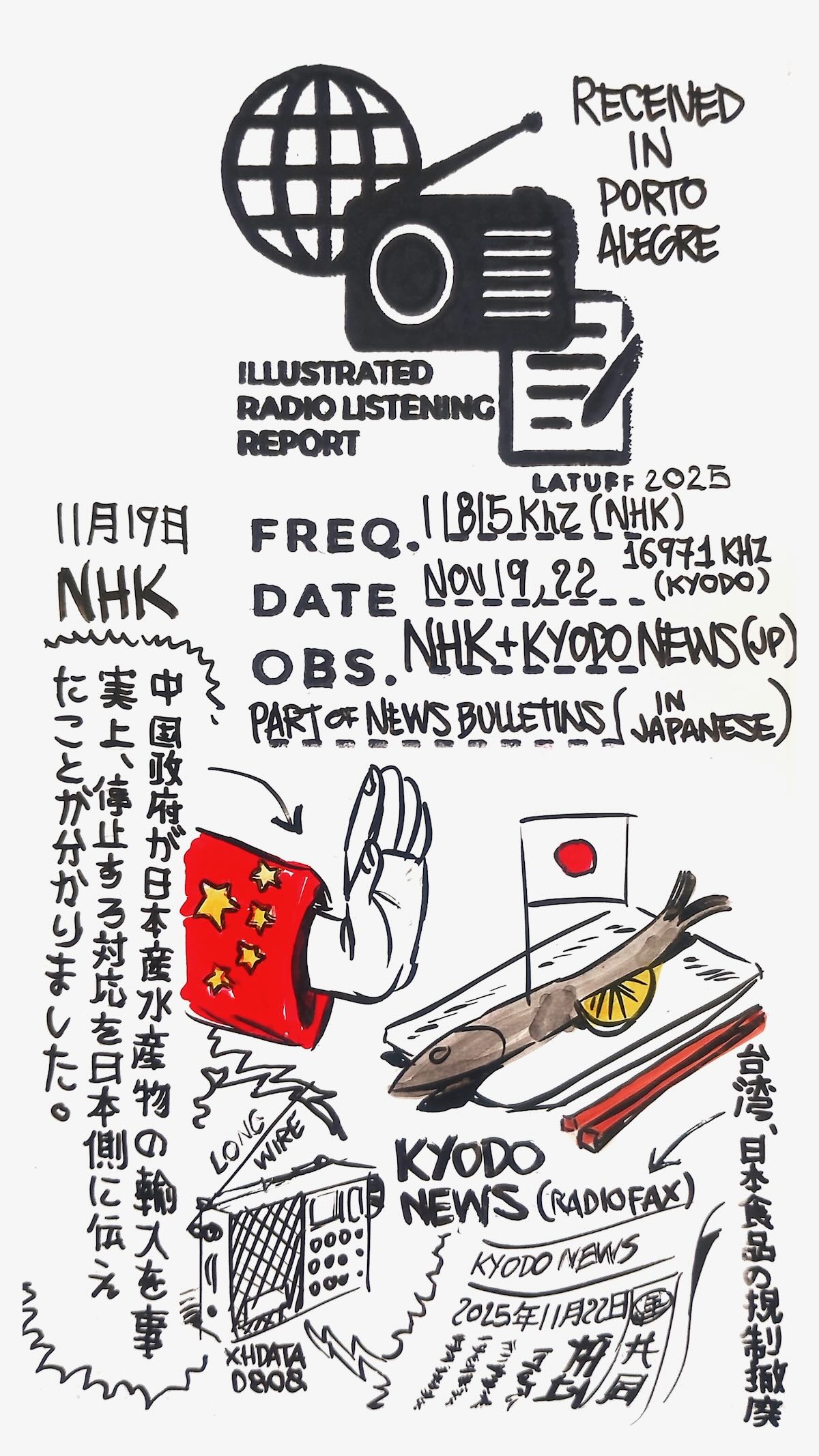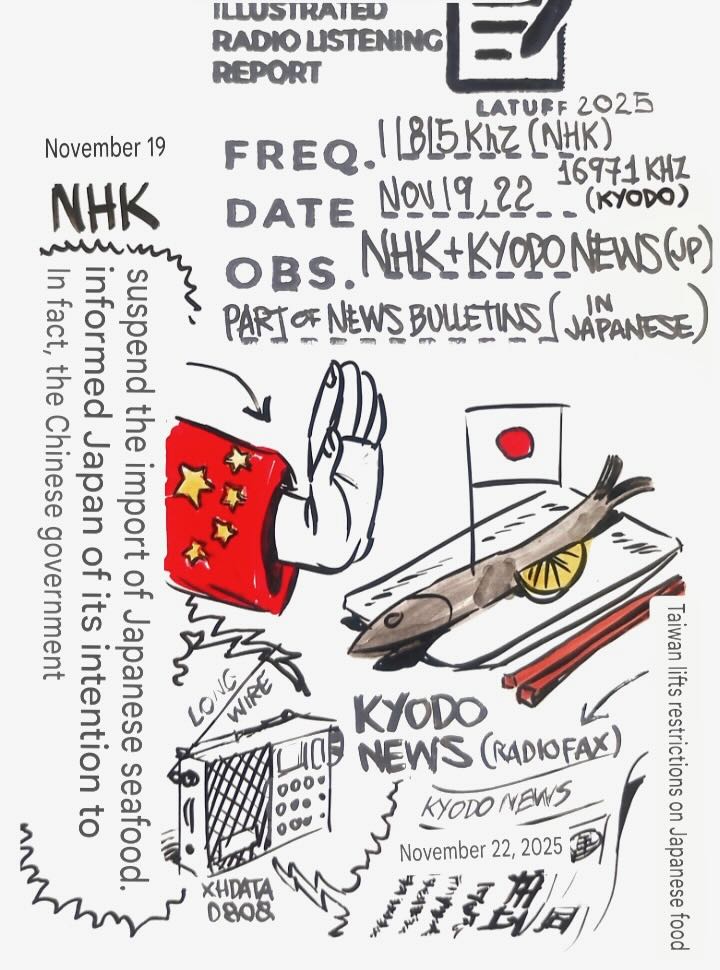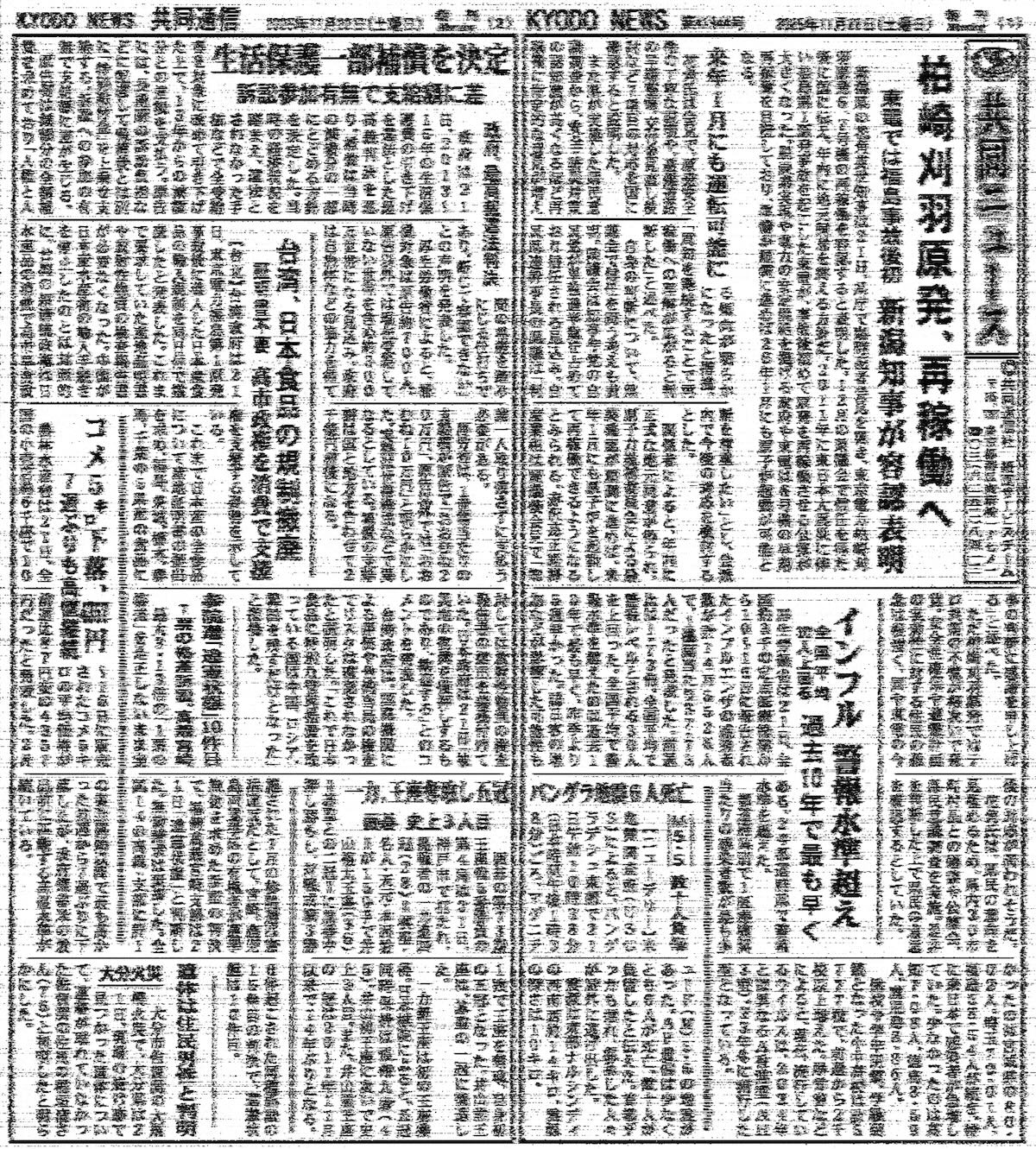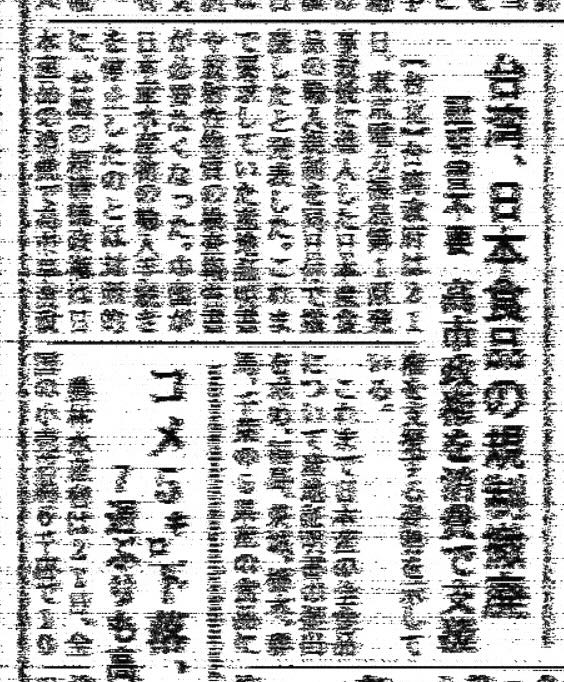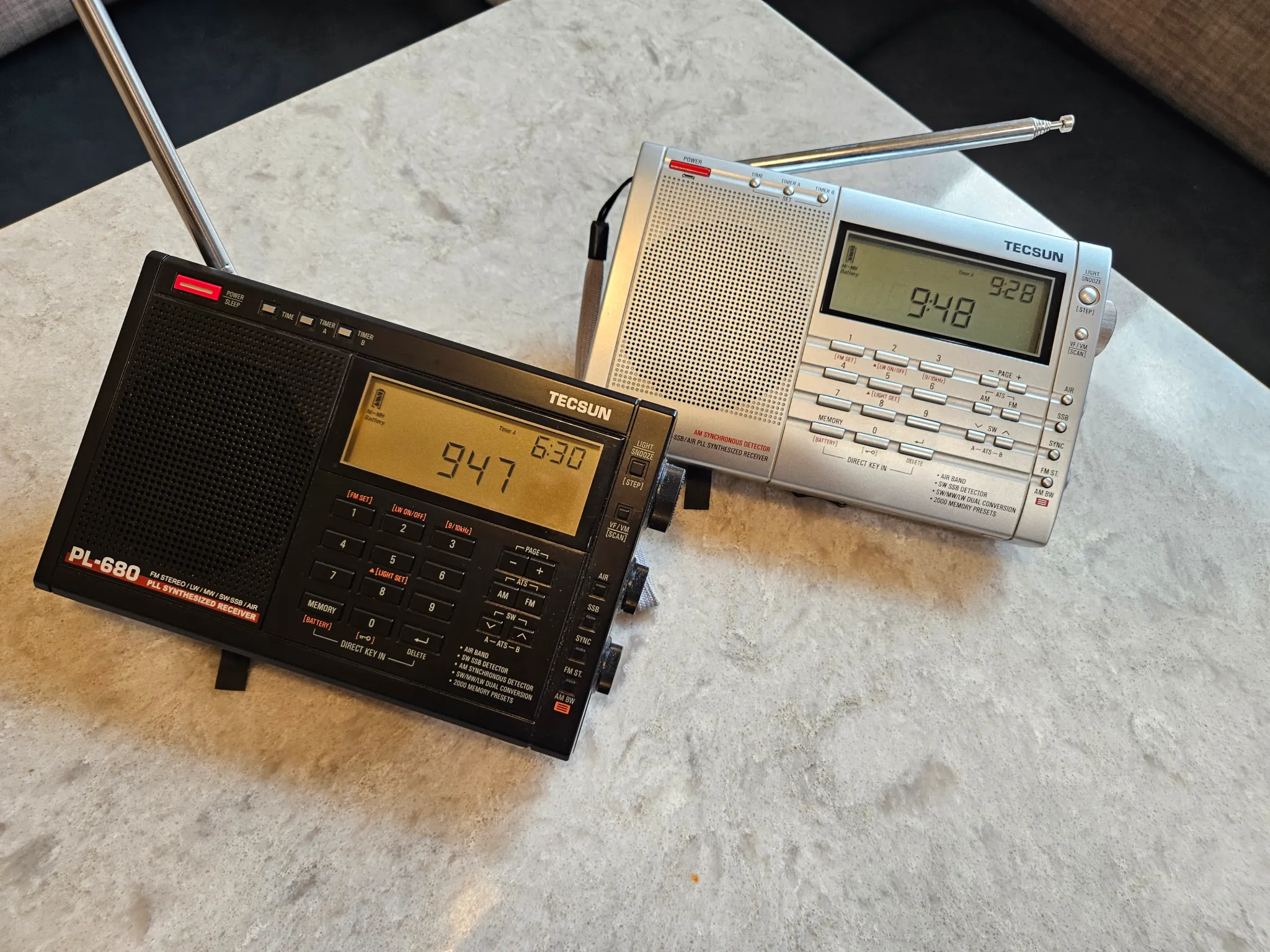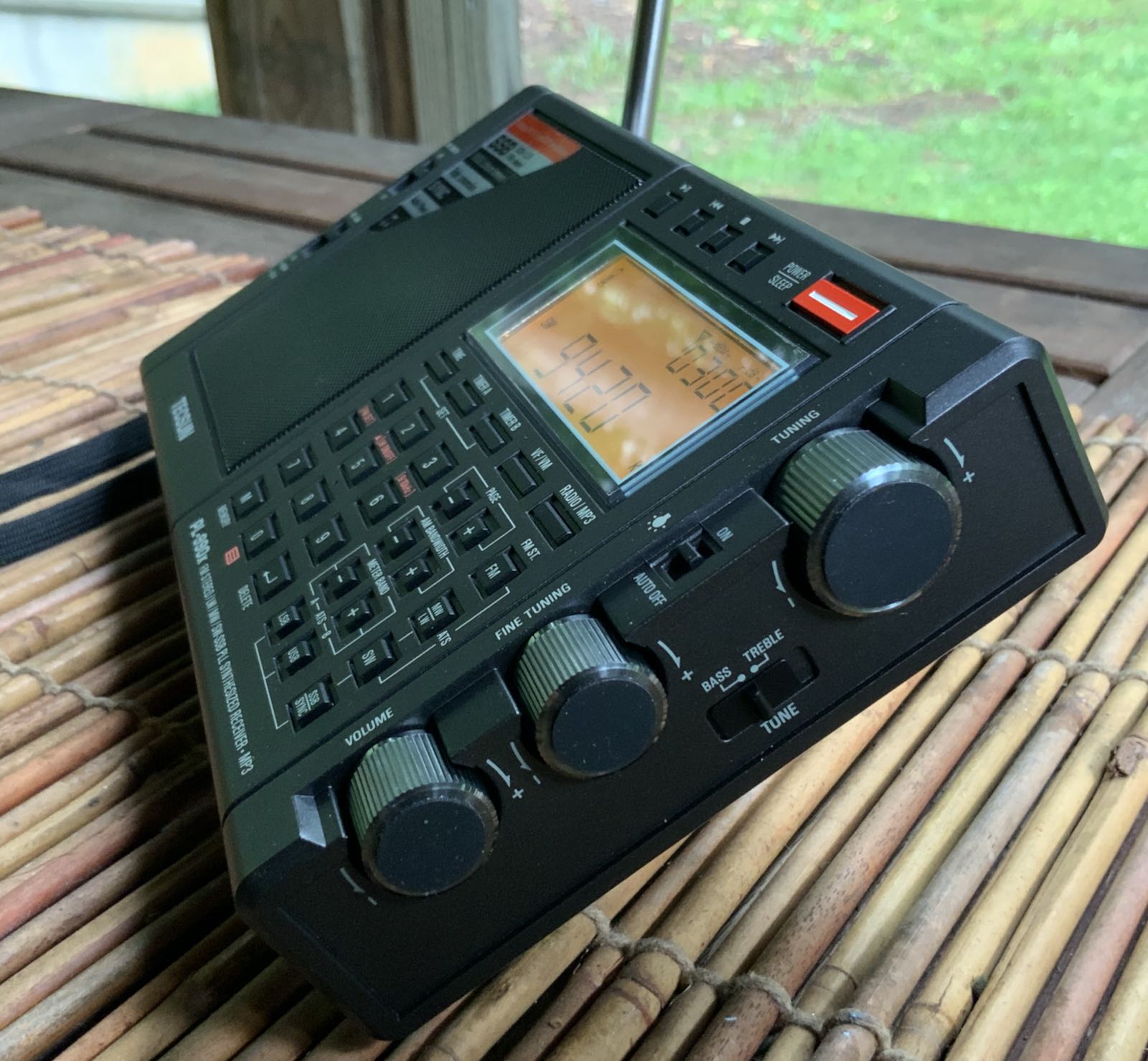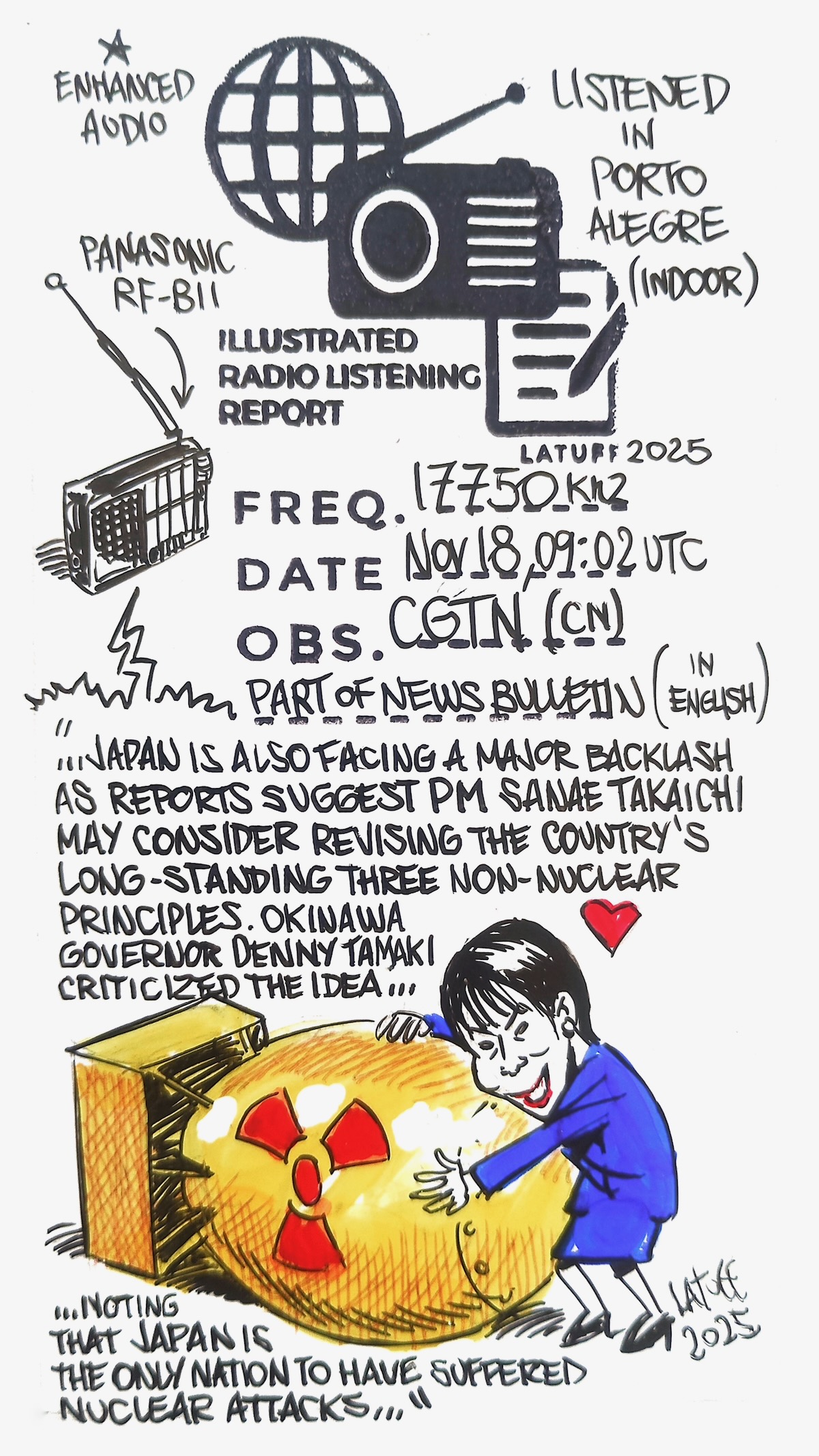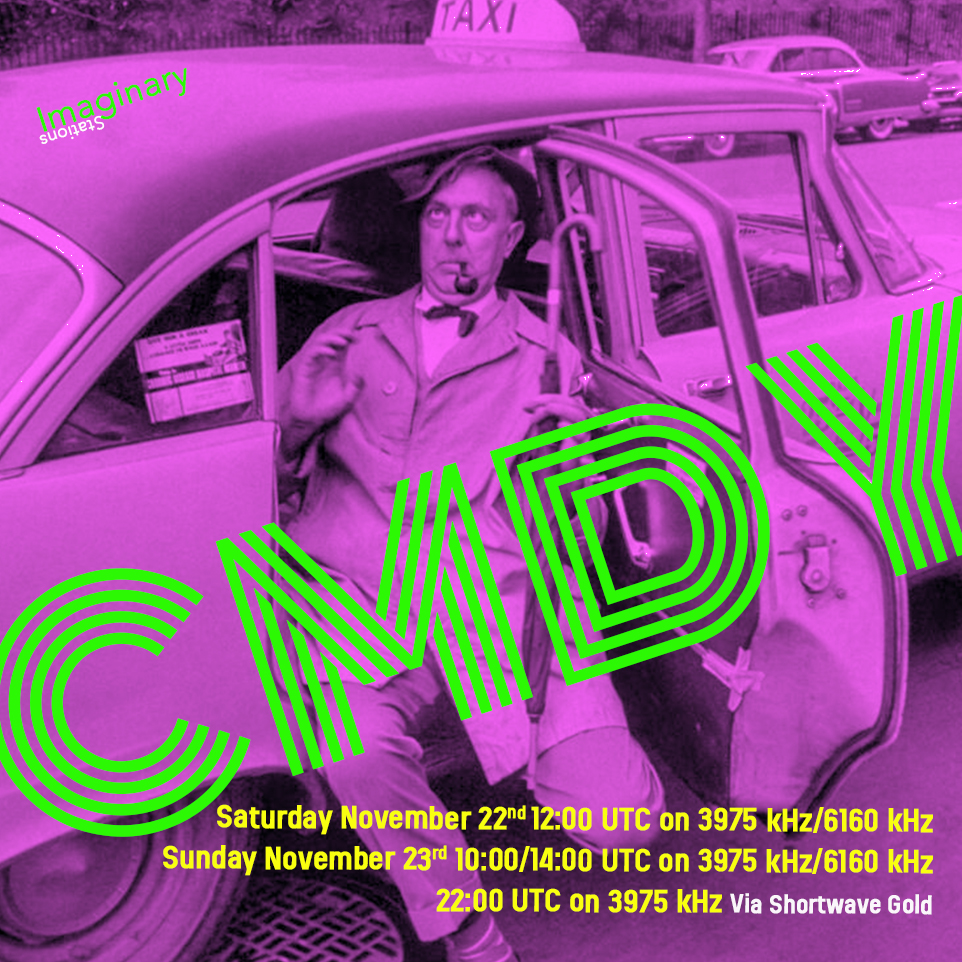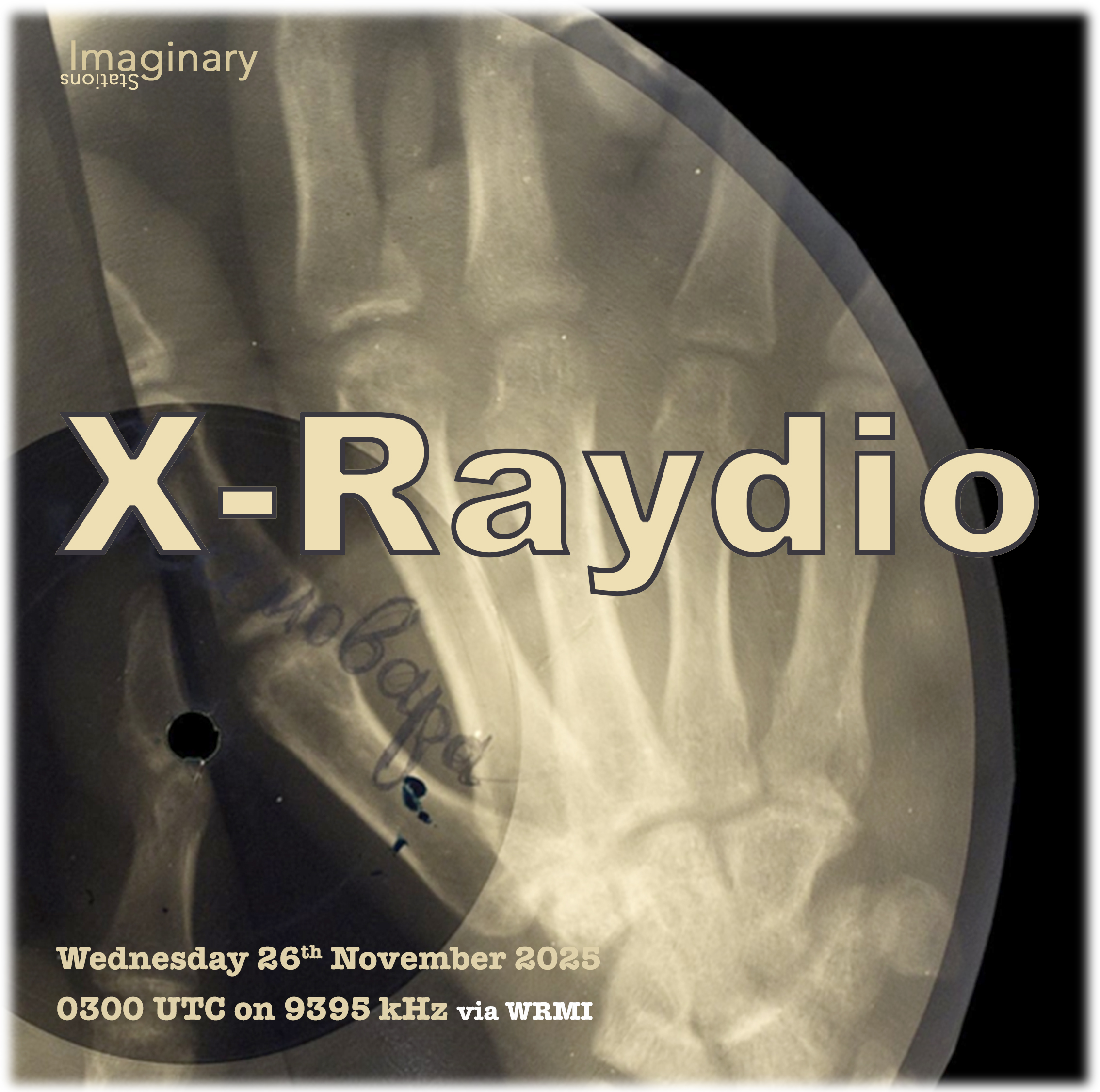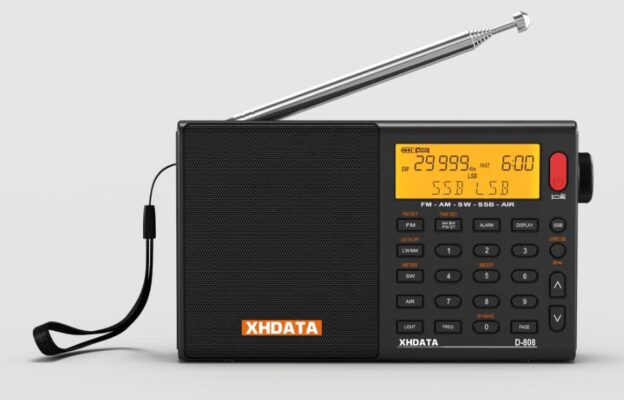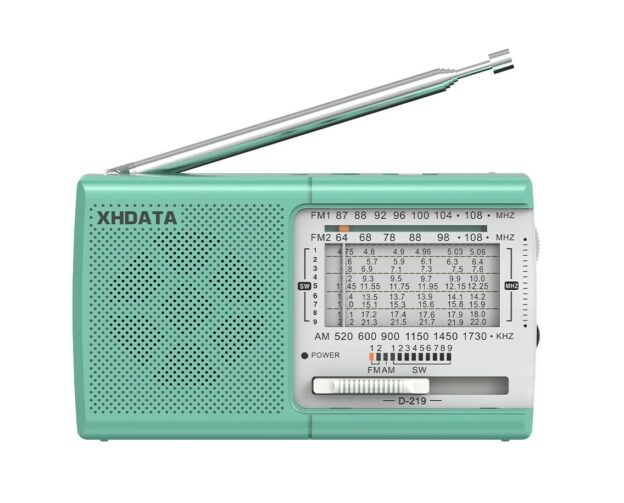The XHDATA D-219 is a shirt-pocket radio which performs quite well, especially given the low price point of ~$13. Paul Jamet has already done an excellent review of this radio (even the same color as mine!) which can be found here. I encourage you to check out Paul’s excellent review, as I am only going to add my experience with the review radio I was sent by XHDATA.
As I typically do, I tested the radio stock – no additional antenna support or boost. Like any portable, a clip-on wire would likely boost performance, but I test radios in their basic state when promoted as a portable radio like the D-219.
Reception was quite good from the solid antenna and (presumably) internal ferrite. AM stations were plentiful and loud; FM stations were also solid and plentiful to my rural location. Shortwave radio was surprisingly good considering the use of the telescopic antenna. The antenna is made well, rotatable, and solid enough for any typical handling.
The side tuning dial is sensitive but very controllable, with slight adjustments bringing in new stations. For such a small radio, I had no difficulty reading the analog-style display, and the front slider moved between bands easily.
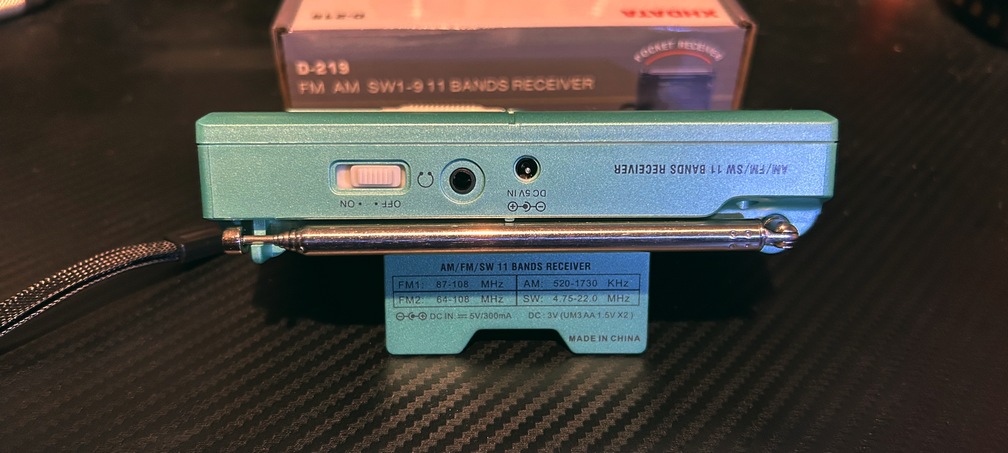
On/Off switch, DC 5V input, and headphone jack along with Kickstand
I appreciate that the radio runs on two standard AA batteries, and has a fold out kickstand. It does also have a DC 5V input (power cable not included), but I did not test it for noise/birdies as again, to me a portable radio will not, under normal circumstances, be tethered to an outlet (did I mention I hate wires?!).
With headphones plugged in the audio is strong and clear, mono, but coming in both sides for that middle of the head effect. Of course, it also works with a single earbud with a mono or stereo plug on the end. Audio without the headphones is also good – as I have noticed with many of the newer Chinese radios, miniaturization allows more room for speakers, and the D-219 does not disappoint.
At this price-point it is hard to find fault with the radio. Within its reasonable limitations, it performs way above what one might expect, as do many of the new radio offerings. Analog looks with digital precision – what’s not to like?! Besides, being a retro kind of guy, I like these portable radios for on-the-go listening!
73, Robert K4PKM

